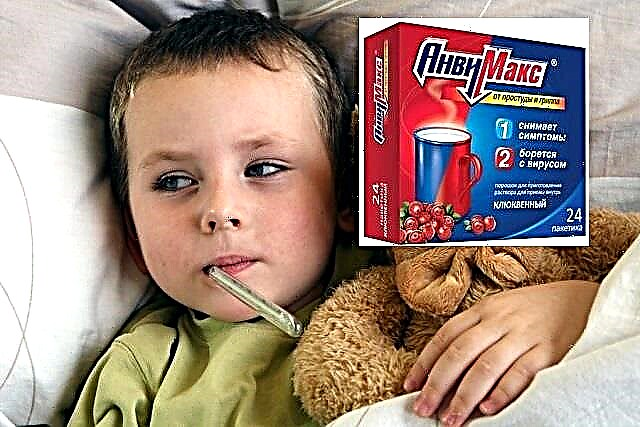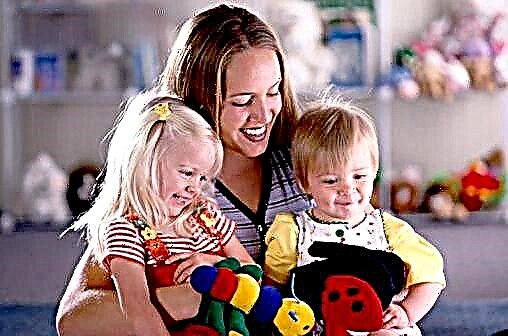
The period of the appearance of teeth in babies is often difficult, causing sleepless nights, whims and other problems. And in order to help the baby, young parents should learn more about milk teeth, the normal timing and order of their appearance, possible problems and the period when they begin to change to permanent ones.

What is it?
Milk teeth are the first teeth that appear in early childhood. The complete set includes twenty primary teeth, represented by 8 incisors, 4 canines and 8 milk molars. Babies need them to bite off and chew food, as well as to form the jaw until the teething begins, called permanent or molars. Besides, they are important for the development of masticatory muscles and speech.
Unlike permanent, dairy:
- Smaller.
- More rounded.
- White with a slight blue tint.
- They grow vertically.
- More fragile.
- Broader and shorter roots.
We recommend watching an interesting video about why the baby needs them:
When counting the child's teeth, start from the midline and move outward, as a result of which a dental formula of 5 teeth is formed: "central incisor - lateral incisor - canine - first molar - second molar". Thus, "ones" are called central incisors, "twos" - lateral incisors. Canines are in third place and therefore are "threes", and molars, respectively, "fours" and "fives".

Dental biological age
The assessment of the child's teeth is used to monitor the development of the child's body, determining whether the child is developing normally, whether his development is delayed or whether the baby is ahead of his peers.
In babies, the number of teeth is counted and compared with the average rates for their age. In children 2-6 years old, radiography is often used to assess changes, since the teeth do not change externally.

When do baby teeth erupt?
Features:
- Milk teeth are often cut in pairs. If mom noticed one "hatched" tooth, soon one should expect the appearance of his "partner".
- In most cases, the process starts from the lower jaw. It is on it that the first central incisors, canines and molars are cut, after which they appear on the upper jaw. At the top, only the lateral incisors are the first to be cut.
- To calculate the normal number of teeth for a certain age of babies doctors use the formula "the age of the crumbs taken in months minus 4".

First tooth
In most babies, the first tooth to erupt is the lower central incisor. It is flat and small, located on the lower jaw, used for nibbling food. Its average appearance period is called 6-8 months, although in some babies it appears several months earlier, while in others its eruption may be delayed until one year of age.
When teething in a child, the mucous membrane of the gums is damaged and aseptic (ie, "non-microbial") inflammation occurs, which causes fever, diarrhea, sleep disturbance and appetite for the baby. At the same time, as a result of damage to the gums, they become more vulnerable to infection and the occurrence of septic (ie "microbial") inflammation, which can complicate the already difficult period of teething. Conventional oral medications are not always convenient for young children. You should choose a drug intended for use in children. For example, Holisal®... When applied topically, it has a triple effect of helping relieve pain and inflammation, and targeting viruses, fungi and bacteria. The adhesive gel base helps to retain the active substances on the mucous membrane, prolonging their action. It is important to be careful when using in children under one year old and consult a doctor beforehand.

Timing
Quite a lot of factors affect the time of teething of children's teeth, among which the main ones are heredity, health and nutritional characteristics of the crumbs. All deciduous teeth usually erupt by 2.5-3 years of age. Approximate time of appearance, average for most children, are shown in the table:
Sequence
The order in which milk teeth "hatch" usually differs in different children, but in most children the following sequence is observed:
- After the appearance of the lower central incisors the next one is cut the same pair of teeth on the upper jaw.
- Next, next to the central upper incisors are cut lateral incisors, and after that, the opposite lateral incisors that appear on the lower jaw begin to be cut.
- The next ones start to erupt first molars... First, they are cut at the bottom, and then "hatch" on the upper jaw.
- Lower teeth begin to erupt between the molars and the lateral incisors. fangs, and after them - the canines on the upper jaw.
- Completes the process of erupting milk cloves second molars, which first, as a rule, are cut at the bottom, and then on the upper jaw.
The famous doctor E. Komarovsky also said a few words about the eruption sequence:
Symptoms
As a rule, in children with cutting milk teeth, they observe:
- Strengthening the production of saliva and its secretion.
- Swelling and redness of the gums where the tooth is being cut.
- Decreased appetite.
- Bad sleep.
- Capricious and irritable behavior.
- Desire to chew on objects to reduce itching in the gums.

In some children, during the eruption of deciduous teeth temperature rises (often not higher than + 37.5 ° С) and not for long loose stools due to swallowed more saliva. Also found the appearance of a mild moist cough and a slight runny nose with clear discharge. Due to the irritating effect of crumbs of saliva flowing from the mouth, it is possible the appearance of redness and rash on the chin and chest.

Why can they get sick?
Due to thinner enamel and increased vulnerability, milk teeth are more often affected by various diseases than permanent ones. Most often they are affected by caries, but in the early stages, no painful sensations from this disease arise.
If the infection gets deeper, the teeth begin to react with pain to certain irritants, such as sour foods or sugary drinks.
Also, soreness can be caused by temperature changes, and if caries has become deep and complicated by pulpitis, pain appears when chewing.
In the video presented, the pediatric dentist gives some tips on how to avoid the development of caries:
Treatment
Although some parents think that baby teeth do not require as careful care and treatment as permanent ones, they must be treated. Lack of treatment can lead to the activation of the infectious process, penetration deep into the dental tissues and pulp, as well as to serious complications. The result is tooth loss, which can lead to a violation of the permanent bite.
A decayed milk tooth acts as a source of infection in the baby's body and weakens its defenses.

The following methods are used in the treatment:
- Fluoridation... The teeth are treated with solutions containing fluorine ions. The technique is often used for the prevention of caries, as well as with its initial manifestations in the form of white spots.
- Silvering... With this method, the teeth are treated with solutions with silver. Like fluoridation, the technique is indicated for initial caries or to prevent it. Darkening of the teeth is called its main disadvantage.
- Remineralization... The essence of this method is treatment with special compounds that saturate the teeth with minerals, in particular, calcium, phosphorus and fluoride.
- Ozone treatment. This method is used to clean teeth from bacteria and disinfect.
- Fissure sealing... With this method, the teeth are covered with a special glass-like substance.
- Filling. This technique involves the removal of infected tissues from the affected tooth and the installation of fillings.

Deleting
In most cases, they try to preserve milk teeth in case of their diseases, so that they "hold a place" for the molars. However, there are situations that force them to be deleted, for example:
- His injury.
- Deep caries with destruction of roots.
- Increased mobility.
- Serious complications of tooth decay, such as periodontitis.
- Violation of the period of loss.
To remove a milk tooth, as a rule, you need to perform injection anesthesia, and in some cases you cannot do without general anesthesia.

Why do they drop out?
Baby teeth are temporary as the baby's jaw grows and the load on it increases. They should be replaced by stronger and larger teeth, therefore, starting from the age of 5, their roots gradually dissolve.
In most children, they fall out at this age:

Change to indigenous
What is it
Molars are permanent teeth that replace milk teeth in a child's body. They are more durable and are presented in greater numbers - in total, 32 pieces erupt in a person, although the last four of them, which are called "wisdom teeth", can erupt much later than adolescence.
Unlike a milk bite, teeth called premolars are present in the permanent teeth. They are cut between the canines and molars.
Dental spaces
Before the first baby teeth begin to fall out, parents will notice that the gaps between them have increased. This is absolutely normal evidence of the growth process of the child's jaw, because the size of the molars is much larger, and by the time they erupt, the jaw increases. If there are no gaps between the baby teeth by the age of six or seven, the child should be shown to the dentist.

The first permanent
For their location, they are called "sixes", since they are cut behind the fifth milk teeth (second milk molars). Dentists call these permanent teeth the first permanent molars.
Their eruption is often observed until the moment when the child has a loss of the first milk clove. This most often occurs at the age of 5-6, that is, a 6-year-old child may have a situation when there are 24 teeth in the mouth, among which twenty are milk and 4 are permanent.

Timing
After the first permanent molars appear and the milk incisors begin to fall out, the molars are cut in this order:

You will learn even more by watching the program of Dr. Komarovsky.
1. Instructions for the medical use of the medicine Cholisal®
There are contraindications. It is necessary to read the instructions or consult a specialist.



